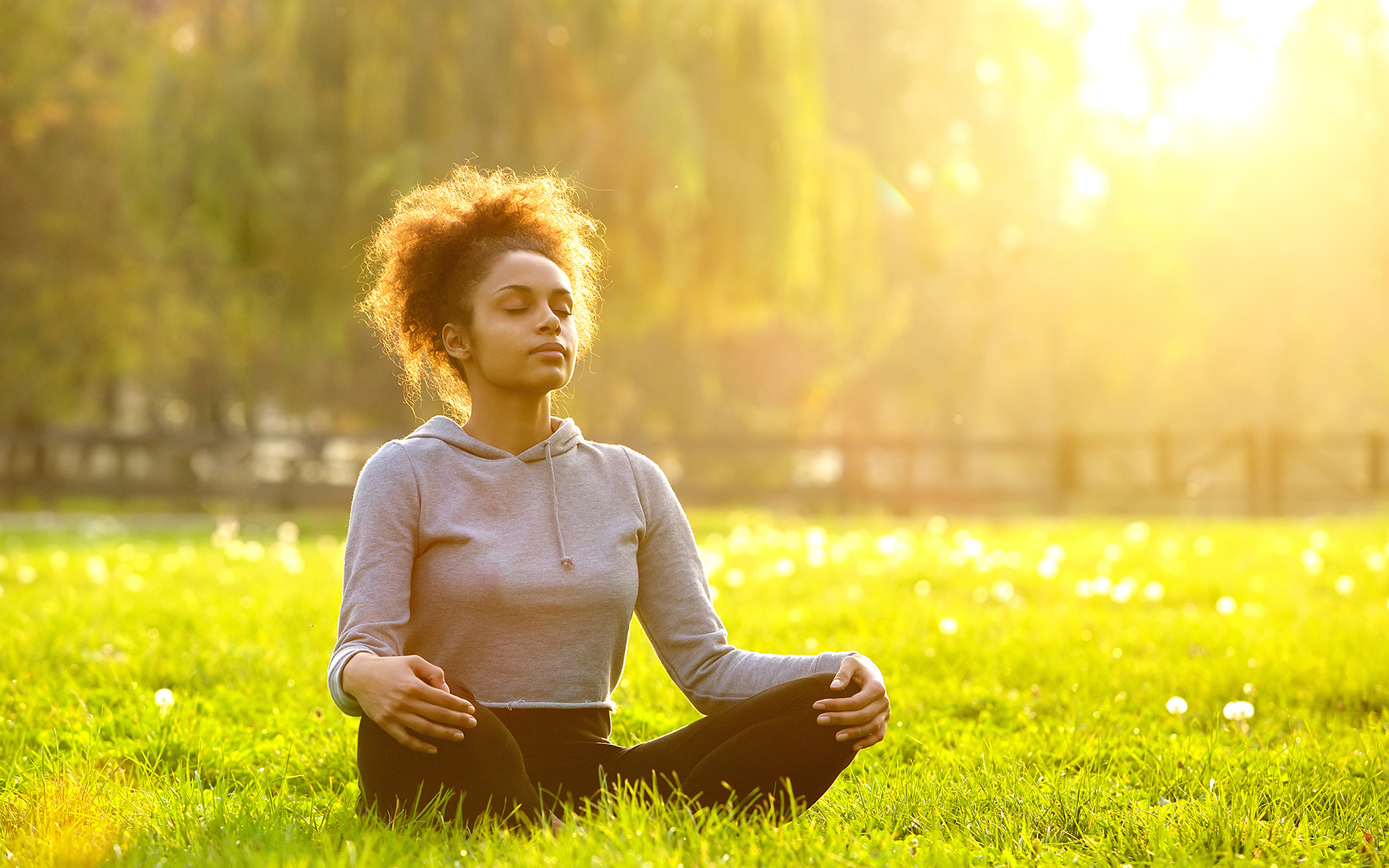20-Minute Practice to Hold the Emotional Body
1. Find a comfortable posture—walking, standing, lying down, or seated. With open eyes, move the head side to side, breathing in and pausing when the chin is over a shoulder, breathe out as the head moves, pausing with the chin over the other shoulder.
2. Notice your space—the colors, shapes, height, width, and depth of the room, the elements of nature.
3. Rest the eyes—open, but with a soft gaze, looking down, or close them. Breathe, and feel into the moment.
4. How is the mind? How is the body? How is the breath? And how is your heart? Feel into the posture of your body.
5. Feel gravity pulling down, rooting this body, connecting it to the Earth. Feel the sense of solidity, knowing this body as Earth element. Feel Earth holding Earth. In this stillness, you might begin to feel the sense of movement. It could be a little vibration, a shimmering. Or you could feel a bigger movement. Perhaps the body is rocking, soothing itself. Whether it’s in the stillness or the movement, you might feel a sense of ease in the body—a place where you can rest. A place that allows you a sense of ease and peace. Keep coming back to this anchor.
Opening up to the Emotional Body
6. Begin to open up to the emotional body. Is there is a presence of, or an absence of? Without getting caught up in the narrative, without anything needing to make sense.
7. Find softening and widening into the experience, and see if the body can follow you. Is there contraction or tightness? Heat or coolness? Stillness or vibration?
8. If we begin to create stories or narratives around it, can we come back to the anchor?
9. Allow this emotional body to move through us at the speed of trust.
10. How do we know the presence of this emotional body? Is it moving throughout the body or is it staying put?
11. Is it getting bigger, or is it getting smaller with our attention placed upon it? Is it solid or is it breaking apart?
12. Are you able to see all that it’s made up of—the fear and sadness, the joy, the happiness, the grief. Can you see impermanence as the emotional body moves through?
13. How is the mind responding? Is there a pulling toward or pushing away, a confusion?
14. What is the quality of a heart and mind when holding on, grasping, clinging, or identifying with a strong emotion? What is the quality of a heart and mind when there is a knowing that this arises, and this will pass away.
15. Is there a sense of ease, of spaciousness, of an opening? How is the body now? How is the breath? How is the heart?
16. Breathe the breath in, and breathe the breath out.
read more
12 Powerful Women of the Mindfulness Movement: 2020
In our second annual focus on women leaders of mindfulness, twelve women share how their deep practice has shaped the world they see—and the one they’re working toward.
Read More
A 6-Minute Practice to Softly Focus Our Awareness
This brief guided meditation lets us focus our attention on the sounds around us, finding bright moments of awareness even when we get distracted.
Read More
A Guided Meditation for Turning Awareness into Action
Michelle Maldonado shares a practice for strengthening our ability to be self-aware, self-actualized, and self-determined as we co-create our emerging new reality and world together.
Read More
A 10-Minute Practice to Fully Experience the Present
When the world feels out of control, it helps to take time to stop and do nothing at all. Jay Vidyarthi guides us to temporarily let go of racing thoughts and rest our awareness in the experience of this moment.
Read More
A 15-Minute Meditation to Cultivate Equanimity
Diana Winston leads a guided practice to find even-mindedness and balance in uncertain times.
Read More











